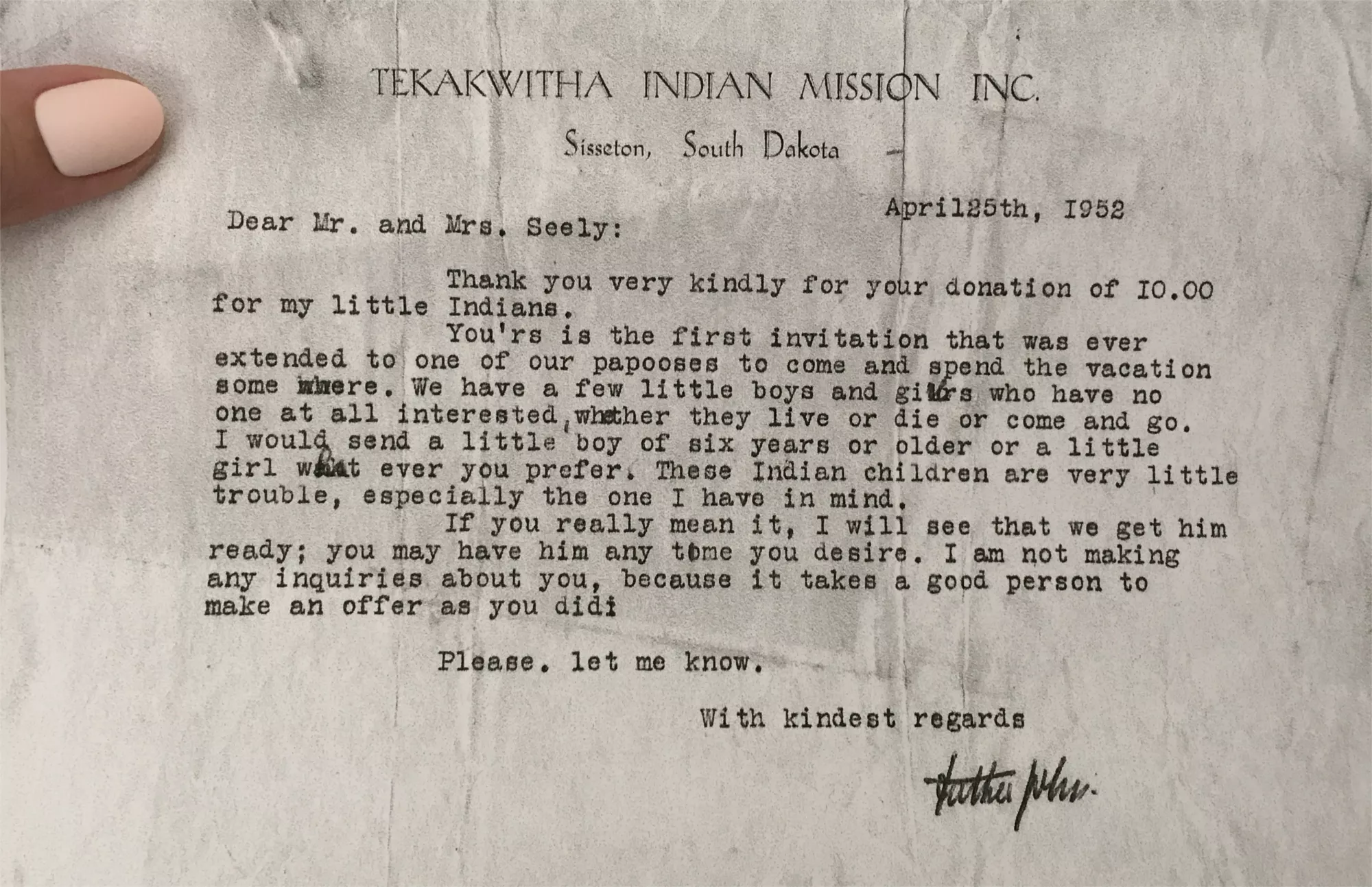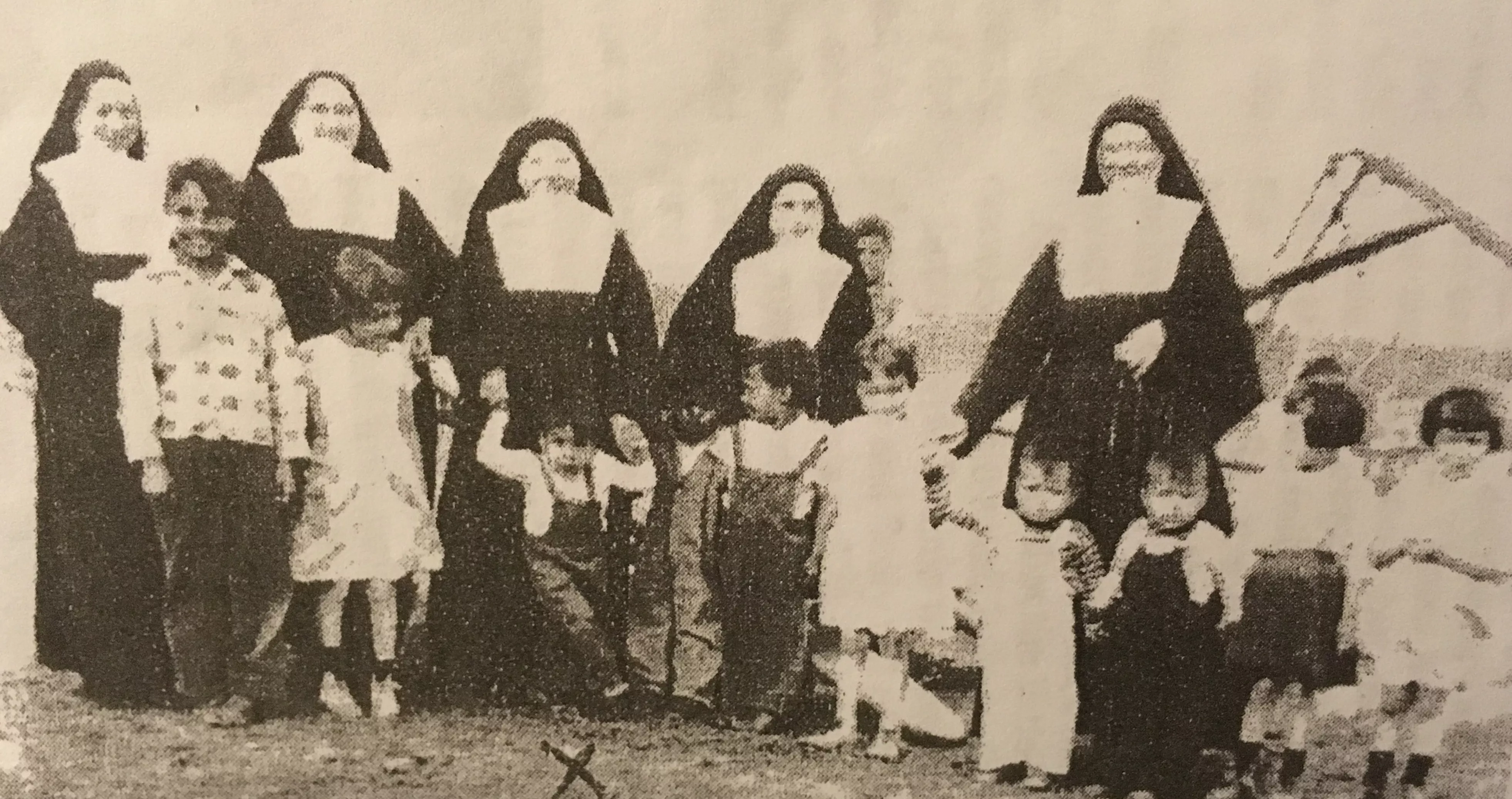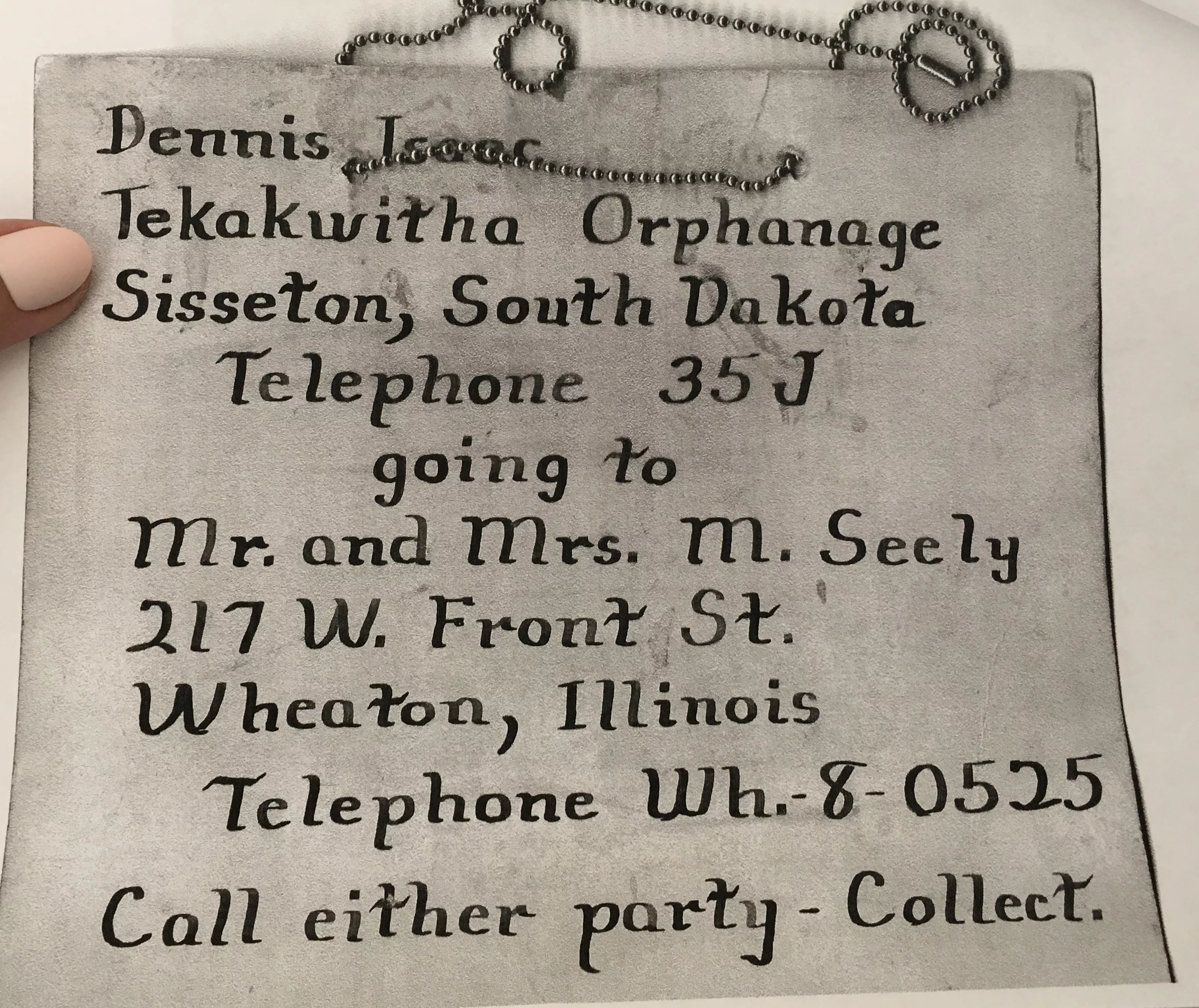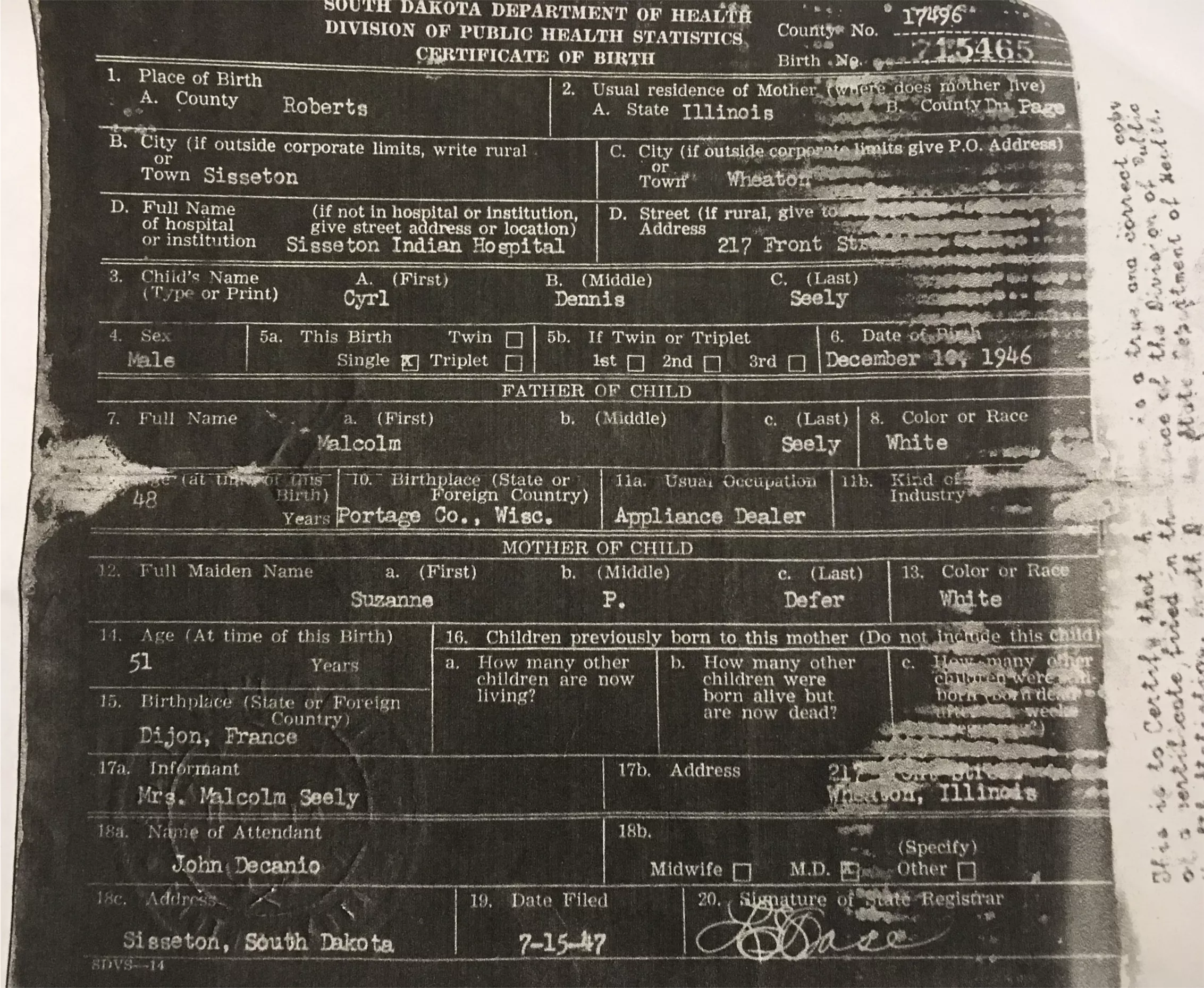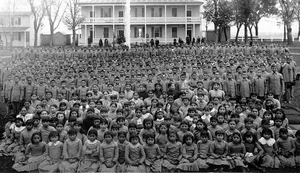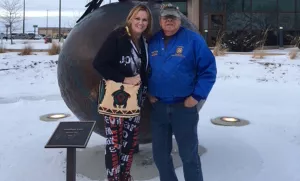Did a Couple Adopt a Native American Child for $10 in 1952?
By Dan MacGuill
The boy that Malcolm and Suzanne Seely wound up adopting is now 71 years old as of March 2018. Dennis Isaac Seely told us in a phone interview that he was an infant in 1946 when he was forcibly taken from his mother, a Dakota Sioux woman living on the Lake Traverse Reservation in Sisseton, close to the North Dakota-Minnesota border: My mother had gone out to dance that night, and this woman was babysitting me… These two men drove up in front of her house, knocked on the door and I was in her arms… This woman tried to hold these people back, and they punched her in the head and knocked her backwards on to the floor… Then they took me out of her arms… Seely later pieced together the details of his early life from speaking with relatives and the family friend who was babysitting the night he was kidnapped. He says when his mother returned home, the men warned her and her friend that they faced arrest if they came looking for him at the orphanage. The women went anyway, Seely says, and were thrown in prison for a week. Seely lived in the “papoose house” at the mission for the next five years.
Pohlen ran the orphanage while Seely lived there. According to Seely and several others who joined in a 2010 class action lawsuit against the Catholic Diocese of Sioux Falls, Pohlen not only sexually abused the children himself, but sold them to people who wanted to acquire the children permanently or even “borrow” them as part of a sinister system of trial adoptions. (Pohlen died in 1969 at the age of 83.) Two dozen former occupants of the orphanage joined the lawsuit, which was ultimately dismissed in 2011. They sued the Catholic Diocese of Sioux Falls and several religious orders over alleged sexual, physical and emotional abuse committed by 15 named Catholic clergymen and nuns between 1941 and 1982. One of the plaintiffs alleges that when she was six years old in 1952: “she was sexually abused by many of the potential adoptive families that [Pohlen], in his capacity as the head of the Orphanage, sent her to visit.” Pohlen’s accusers say he abused little boys and girls, both in the “papoose house” and in his own private quarters on the grounds of the mission. In a statement, a spokesperson for Pohlen’s order, the Central United States Province of the Missionary Oblates of Mary Immaculate, told us: Everything we know about Fr. Pohlen suggests that he worked tirelessly, and at considerable personal sacrifice, to improve the lives of Native American children and others in the Sisseton community. It appears that he was well-respected among the Native American community of Sisseton as well. We have no information that would indicate that Fr. Pohlen ever exploited or facilitated the sexual abuse of Native American children through trial adoptions, permanent adoptions, participation in visits or vacations with local families, or otherwise. Seely says otherwise. In one incident, he says Pohlen — who would have been 65 years old at the time — sexually abused Seely, who was then a four-year-old boy, tricking him with the promise of a lollipop. “Keep him as long as you want him” On 3 May 1952, eight days after Pohlen’s letter to the Seelys, the five-year-old Dennis was alone on an 18-hour, 700-mile bus journey to his new home with only “a little bag of food” and a sign around his neck:
To make matters worse, Seely says, the bus broke down along the way, and he soiled himself and spent the night in prison after a “kind police officer” took him in, before putting him back on the bus the next morning. Not long after young Dennis arrived in Wheaton, Pohlen wrote to Suzanne Seely: “Keep him as long as you want him — and nobody claims him.” But shortly after he arrived at the Seely house, his biological father showed up; Seely believes it was to take him home: My father, Ben Hill, tracked me down to 217 West Front Street [in Wheaton], and they let him in. He gave me half a box of Bazooka bubble gum, and he kind of hugged me, and that was it. His mother Sophia died in May 1963 at the age of 41, after suffering for months with cirrhosis of the liver brought on by alcoholism. Before she died, he says, his birth family tried to contact him to tell him his mother was dying so that they could see each other and say their goodbyes: They were trying to find me… I think they did get a hold of the Seelys, but [the Seelys] just kept it quiet. They didn’t let me know. They didn’t tell me that she needed to see me. He says it was years before he found out his mother had died. ‘Cheap Indian labor’ Seely has no doubts about why he was acquired from the orphanage: As I got older, I got to thinking of myself as cheap Indian labor. They never paid me much for anything… I kind of cleaned the floor and I had to sweep down everything… I had to work my way, you know, to get my food. I lived about a mile and a half from the high school, in West Chicago, Illinois, and never once did they ever take me to school in bad weather… I walked. Asked whether the Seelys ever regarded or referred to him as their son, he replied, “No. They just called me Dennis.” The Seelys also appear to have attempted to erase all record of his Dakota Sioux family and heritage. An apparently falsified birth certificate lists Malcolm and Suzanne as his biological parents. The document is dated 15 July 1947, five years before Dennis arrived in the Seely’s home. It lists Suzanne Seely’s age at the time of his birth as 51:
“Kill the Indian in order to save the Man”
The National Native American Boarding School Healing Coalition, a nonprofit dedicated to educating the public about the history of Native American boarding schools, counts the Tekakwitha Indian Mission in Sisseton as one of 23 “American Indian boarding schools” in South Dakota, many of them Catholic. These types of schools sprang up in the 19th century as part of a federal policy to forcibly assimilate Native American children into white society by kidnapping them from their families and erasing their religious, cultural and linguistic traditions. The National Native American Boarding School Healing Coalition, says there were 351 such institutions nationwide, and 53 of them were still open as of 2017. Richard Pratt, who in Pennsylvania in 1879 founded the first of these schools, infamously summed up the “civilizing” mission of the policy: “Kill the Indian in order to save the Man.” After being abducted from their families, the children faced routine mistreatment and abuse including malnutrition, denial of medical treatment, and forced labor. Some were even killed using dangerous machinery without proper instruction, according to a United Nations report. The search for justice Michelle Dauphinais Echols, the attorney who first published Pohlen’s letter to the Seelys, works with survivors of other boarding schools in the region. In particular, she has worked on the “9 Little Girls” campaign on behalf of nine sisters who sued Catholic institutions for alleged sexual abuse by nuns, priests, and brothers at the St. Paul’s Indian Mission on the Yankton Sioux Reservation at Marty, South Dakota. In 2012, the South Dakota Supreme Court ruled against the women and other plaintiffs, finding that the Diocese of Sioux Falls was not liable for the actions of clergy employed at the mission and that a 2010 law meant nobody over the age of 40 could sue an institution for abuse perpetrated by specific individuals. Survivors of child sexual abuse often find it difficult to confront their trauma until later in life, which means many are well over 40 when they seek justice in the courts system. By then, their abusers are often dead, meaning they can only seek redress from the institutions where the abuse occurred. But HB 1104, the 2010 law passed in South Dakota makes this effectively impossible. Dauphinais Echols tried to change the law, by writing Senate Bill 196, which would have repealed the “40-year-old” rule on suing institutions, as well as temporarily suspending the three-year statute of limitations. On 13 February 2018, South Dakota’s Senate Judiciary Committee voted 4-3 against forwarding SB 196 to the floor of the Senate, essentially killing the bill. However, Dauphinais Echols plans to resurrect SB 196 in the future. Speaking to us by phone, she said she and the sisters would leverage the 2018 elections to galvanize support for the bill: We’re really going to be focusing on…supporting campaigns for those people who are with us and doing the right thing in the legislature. We’re also going to be identifying candidates that have the courage to do the right thing, and supporting their campaigns.
In 1990, Seely went back to the reservation from where he had been kidnapped more than 40 years before. He told us: I felt like an outsider. Everything was taken away from me — my language, my history, everything. I felt like a white person coming into the reservation. On one occasion, he got into an argument with a tribal elder who told him to “go back where you came from.” As a tribal police officer back in the 1990s, he came back to the site of the Tekakwitha mission, which was demolished in 2010. As he stood in the place he spent the first five years of his life, memories flooded back. He told us: I can remember a lot of the kids looking for their parents to come and get them… Looking for someone to come down the driveway there, off the main highway there. No one ever came.
|
.
Any original material on these pages is copyright © BishopAccountability.org 2004. Reproduce freely with attribution.
